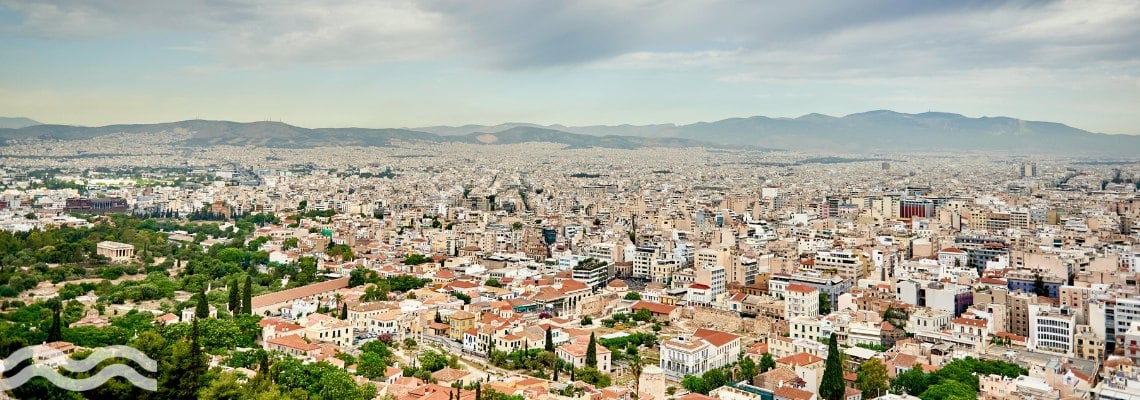Greece invests in long-term water security

The dangers of a warming climate
Greece has been experiencing dry summers and winters; this has led to falling rainfall averages, soaring temperatures, and little or no snow cover. Like all countries, Greece is experiencing increasing demand, albeit without the population growth experienced by other countries.
Demand for water supply, sewerage, waste management and remediation activities has increased according to two metrics measured by the Hellenic Statistical Authority. Published in 2025 and covering data for the years 2016 to 2022, the authority measured both non-hazardous and hazardous waste generated by ‘different branches of economic activity’. Measured in thousands of tonnes, non-hazardous waste increased during the period from 1,669 to 3,835 thousand tonnes, while hazardous waste increased from 135,389 to 151,457.
Even with a stable population, demand for water and water treatment continues to increase. Coupled with scorchingly dry weather for prolonged periods, with occasional extreme weather events, water security issues are at the forefront of the Greek government’s thinking.
Greece is a founding member of the Global Water Organization; along with seven other nations, the members are working to promote collaboration between governments, businesses in the water sector and other organisations in a bid to ensure sustainable water supplies.

The Lake Mornos alarm bell
One of the major indicators of water security is the level of reserves in Lake Mornos, a giant reservoir in the Attica region that provides the main water supply for the Athens basin, and consequently a large percentage of Greece’s total population.
According to EYDAP, one of the country’s largest water utilities, satellite data from the National Observatory of Athens confirmed that the lake held 156,996,000 m3 when measured on October 23, 2025. This represented the lake’s lowest level in 15 years and a drop of 45 per cent compared to the same date in 2024. The surface area of the man-made lake has dropped so low that it has revealed villages that were submerged when the reservoir was created.
Speaking to the Orange Press Agency, Kostas Lagouvardos, research director at the National Observatory of Athens, explained some of the reasons for the lake’s decline, including well below average snow cover, which has reduced the meltwater supply. He added: “Rainfall this year has been among the lowest in the last 10 years.”
The first stage: a thirty-year plan
Earlier in 2025, the Greek government launched a national water strategy designed to tackle the increasing challenges it was facing. The strategy takes an investment-oriented approach to water management, which replaces the current fractured system with a centralised, national policy.
Key to the strategy is a five-pillar approach to modernising the country’s approach to producing, distributing, and conserving water by promoting better collaboration between utilities and local authorities, a focus on sustainability and the increasing use of technologies such as desalination, all designed to secure water for the next three decades.
Water security in Greece will be built on the following five pillars:
- Affirming water as a public good, in line with the Greek Constitution.
- Ensuring financially viable water, irrigation, and sewage services with fair pricing.
- Centralised planning and management of both large and small-scale projects.
- Immediate short-term actions over the next six months, supported by a public awareness campaign.
- Adoption of new technologies, including recycling, reuse, and desalination.
According to the WWF’s Water Risk Filter, Greece ranks very high on the baseline water stress metric. This measures the ratio of total surface and groundwater withdrawals to available renewable water. Greece is also in the top 25 countries most at risk of water stress, according to the World Research Institute’s Aqueduct Water Risk Atlas.
Investment for 30 years
Falling under both the ‘Immediate action’ and ‘Centralised planning and management’ pillars, the government has announced it will invest €2.5 billion to secure water supplies.
Talking at an event in Athens, energy and environment minister, Stavros Papastravrou, warned that without action, “Greece will be facing the second most severe water stress in Southern Europe after Cyprus.” Adding that water losses stood at 50 per cent, evaporation had risen by 15 per cent, and consumption had risen by six per cent.
He further warned that Athens and the country’s second-largest city, Thessaloniki, would face the worst effects.
Investment will be used for a wide variety of projects, including funnelling water through tunnels from two tributaries to a reservoir in western Greece, using desalination plants – with sites in Thisvi, Lavrio, and Nea Peramos under consideration - reducing water lost to leakage, and boring wells to secure water for Athens. Other measures include EYDAP and another major utility, EYATH, taking charge of the country’s irrigation grid, effectively managing the many smaller local utilities currently in charge.




